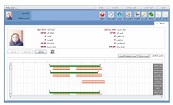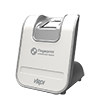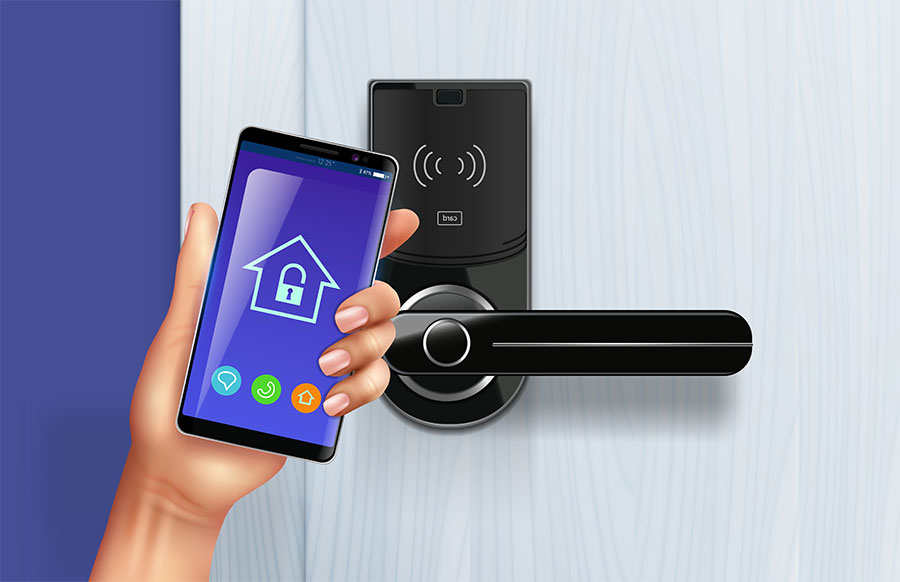Every organization need access control, either to monitor who enters and exits the workplace or to restrict physical access to specific areas of the facility.
Because of this, access control is a crucial aspect of an organization's security. There are three fundamental access control types:
With a cloud-based access control system, you may remotely manage entries from any Internet-connected location in the globe. With a mobile or laptop application, you can control who has access to entrances and can instantaneously give or withdraw access.
The software is cloud-based since it is hosted in the cloud as opposed to on-premises servers (physically placed in the company's facility).
This offers several advantages, including a reduced initial investment, fewer maintenance expenses, on-demand accessibility, scalability, and frequent upgrades.
What you will learn from this article:
- How do cloud access controls function?
- Cloud access control's benefits for end users
- Integration partner benefits of cloud access control
What is cloud access control
The primary benefit of a cloud-based access control system is the ability to manage access or unlock doors from anywhere. As an administrator, you have access to a web and mobile application that enables online remote door management.
The administration dashboard provides the following several features:
- Identity management
- Management of access - granting or canceling admission access
- Open or lock doors
- Implement a building-wide lockdown
- View information and statistics on who entered and left the property.
- View alerts and notifications instantly on your mobile device.
Alternatively, people with access - workers, visitors, etc. - can use their mobile phones to unlock doors; alternatively, various types of readers are also accessible (card, bracelet, fob, keypad...).
The primary advantage of cloud access control is that doors may be unlocked with a cell phone, eliminating the need to carry extra physical things.
In the aftermath of COVID-19, restricting usage to one’s own cell phone is an important strategy to help avoid the spread of diseases. The tendency of handling corporate infrastructure is such approach is dubbed the Low-Touch Economy.
So how does cloud access control work? It's simple. The software (database, logic) is housed in the cloud and can be accessed from anywhere: managers may use a mobile or web app, while end users can simply use their mobile phones to open doors (with an app, key link, etc). (with an app, key link, etc.).
Near the door is a system that links the card reader and drives the electric lock. This instrument may be some form of smart lock or door controller, leveraging an internet connection, either wired or wireless.
Cloud access control's benefits for end users
In comparison to traditional on-premises installs, cloud-based software solutions have become the industry standard in nearly every software category over the past decade.
Large organizations that can afford IT teams to regularly manage security, upgrades, administration, etc. while maintaining a sophisticated architecture of servers and networks are a probable exception. However, it is also true that business clients are increasingly opting toward hybrid (cloud and on-premises) solutions.
There are many advantages to opting for cloud access control over expensive on-premises installations. The key benefits of a cloud-based access control solution are:
- Regardless of your operating system or browser, you may access the online application.
- With only an internet connection, the program is accessible from nearly everywhere.
- New capabilities, security measures, and other changes are implemented automatically.
- All information and management choices are consolidated and simple to back up.
- Initial expenses are substantially less.
- As the firm expands, the cloud solution scales simply.
- In most cases, the user experience is far superior than that of on-premises systems.
- APIs can be used to link the access control system to other applications.
- It is simple to support several locations, even on separate continents.
What about negative aspects? There are some minor potential downsides, including less customization possibilities and security issues if cloud computing best practices are not followed.
Nevertheless, hazards may be readily addressed, which is why cloud-based access control is gaining popularity.
Cloud access control's benefits for integration partners
In the same way that cloud access control provides several advantages for end users, it also offers considerable advantages for integration partners.
In comparison to traditional on-premises installs, cloud-based software solutions have become the industry standard in nearly every software category over the past decade.
A possible exception is the case of large enterprises which can afford IT teams to constantly handle security, updates, administration, etc., while maintaining a complex infrastructure of servers, networks, and the like. It is also true, however, that even enterprise customers are increasingly leaning toward hybrid (a combination of cloud and on-premises) solutions.
Resource: spica.com







































































